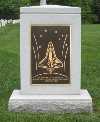
Source: The Free Dictionary

Source: The Free Dictionary
 On February 5, 1990, Pakistanis protested against Indian rule in an armed uprising. More than 80,000 Kashmiris lost their lives during the demonstrations. Pakistan People’s Party Government leader Benazir Bhutto responded by declaring the day a public holiday. Along many of the major roads in the capital city, banners are displayed to show Pakistan’s solidarity with the Kashmirs. A five-minute period of silence is observed to remember those who were killed in the uprising. In addition, every province plans its own events, including rallies or processions, seminars, and speeches. Discuss
On February 5, 1990, Pakistanis protested against Indian rule in an armed uprising. More than 80,000 Kashmiris lost their lives during the demonstrations. Pakistan People’s Party Government leader Benazir Bhutto responded by declaring the day a public holiday. Along many of the major roads in the capital city, banners are displayed to show Pakistan’s solidarity with the Kashmirs. A five-minute period of silence is observed to remember those who were killed in the uprising. In addition, every province plans its own events, including rallies or processions, seminars, and speeches. Discuss
Source: The Free Dictionary
 The former British colony of Ceylon changed its name in 1972 to Sri Lanka, which means “Blessed Isle.” Sri Lankans commemorate the granting of their independence from Great Britain on February 4, 1948, with public gatherings throughout the island and special services in the temples, churches, and mosques. There are also parades, folk dances, processions, and national games. Discuss
The former British colony of Ceylon changed its name in 1972 to Sri Lanka, which means “Blessed Isle.” Sri Lankans commemorate the granting of their independence from Great Britain on February 4, 1948, with public gatherings throughout the island and special services in the temples, churches, and mosques. There are also parades, folk dances, processions, and national games. Discuss
Source: The Free Dictionary
 Sant’ Agata (St. Agatha) is especially revered in Catania, Sicily, where her relics are preserved in a silver casket. On February 3, 4, and 5 each year, a silver bust of St. Agatha wearing a jewel-encrusted crown is carried in procession from the cathedral to Catania’s various churches. Included in the procession are the ceri, huge wooden replicas of candlesticks that are carved with episodes from the saint’s martyrdom. The streets are lined with streamers and flowers, and illuminated by strings of colored lights after dark. The festival ends with a fireworks display in the piazza. Discuss
Sant’ Agata (St. Agatha) is especially revered in Catania, Sicily, where her relics are preserved in a silver casket. On February 3, 4, and 5 each year, a silver bust of St. Agatha wearing a jewel-encrusted crown is carried in procession from the cathedral to Catania’s various churches. Included in the procession are the ceri, huge wooden replicas of candlesticks that are carved with episodes from the saint’s martyrdom. The streets are lined with streamers and flowers, and illuminated by strings of colored lights after dark. The festival ends with a fireworks display in the piazza. Discuss
Source: The Free Dictionary
 There was a medieval superstition that all hibernating animals came out on Candlemas to check the weather. If they could see their shadows, it meant that winter would go on for another six weeks. The most famous forecaster in the U.S. is Punxsutawney Phil, a legendary groundhog in Pennsylvania believed to be nearly a century old. Thousands of people trek up to Phil’s burrow on February 2 and get the news directly from him. Numerous events take place in Punxsutawney surrounding February 2, including parties, live entertainment, and a winter carnival. Discuss
There was a medieval superstition that all hibernating animals came out on Candlemas to check the weather. If they could see their shadows, it meant that winter would go on for another six weeks. The most famous forecaster in the U.S. is Punxsutawney Phil, a legendary groundhog in Pennsylvania believed to be nearly a century old. Thousands of people trek up to Phil’s burrow on February 2 and get the news directly from him. Numerous events take place in Punxsutawney surrounding February 2, including parties, live entertainment, and a winter carnival. Discuss
Source: The Free Dictionary

Source: The Free Dictionary
 This island in the Pacific Ocean gained independence from Great Britain on January 31, 1968. It had been governed by Australia. Independence Day is a national holiday in Nauru. Discuss
This island in the Pacific Ocean gained independence from Great Britain on January 31, 1968. It had been governed by Australia. Independence Day is a national holiday in Nauru. Discuss
Source: The Free Dictionary

Source: The Free Dictionary

Source: The Free Dictionary